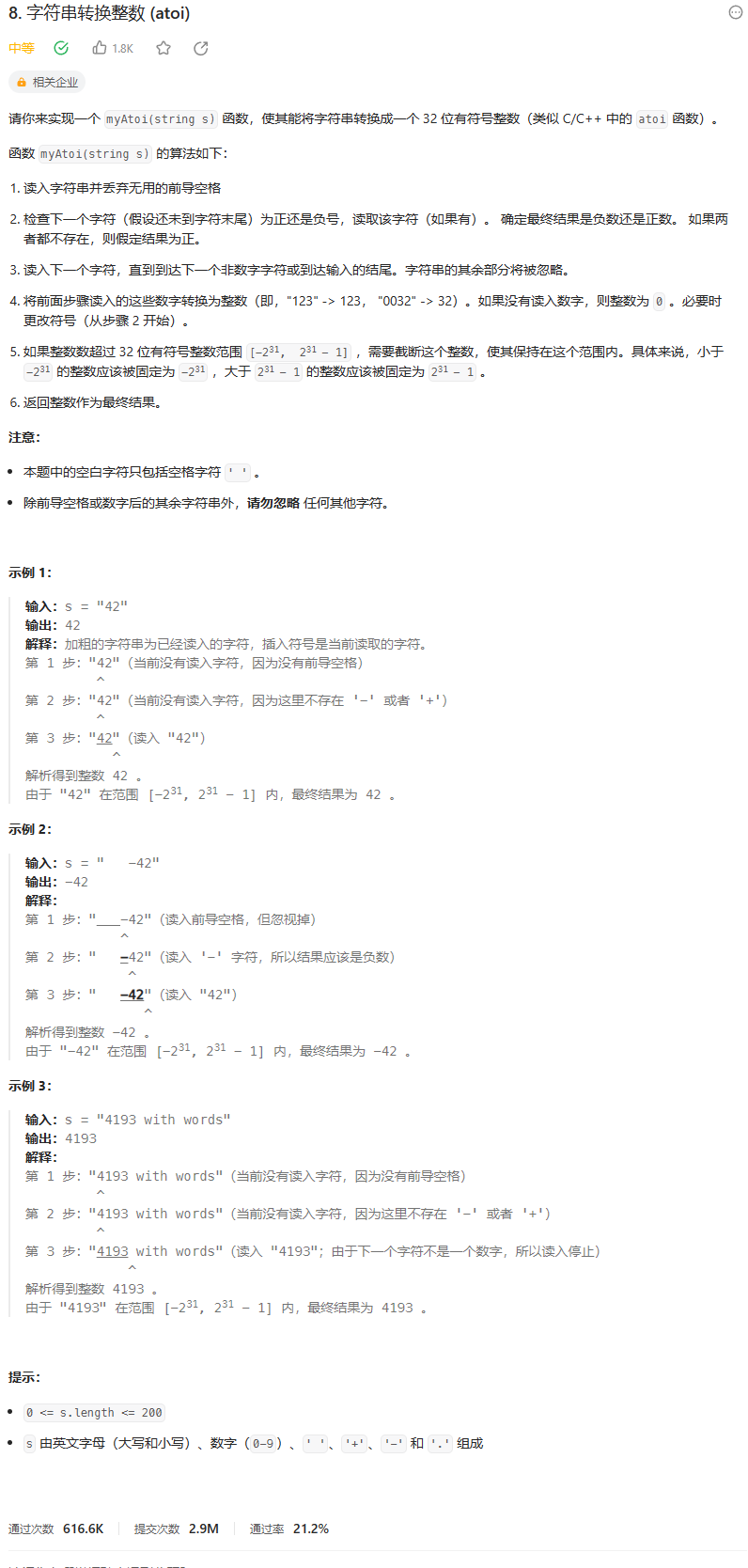字符串转换整数
1、题目
 image-20231222145709687
image-20231222145709687
2、题解
方法1:使用已有函数去除字符串中的空格,然后再进行拼接
根据题意,有以下四种字符需要考虑:
首部空格: 先用strip()函数进行处理 符号位: 三种情况,即 ''+'' ,
''−'' , ''无符号" ;新建一个变量保存符号位flag,返回前判断正负即可。
非数字字符: 遇到首个非数字的字符时,应立即返回。 数字字符:
数字越界处理:需要判断res在每轮拼接前先判断在此轮拼接后是否产生了越界,一共有两种情况。
第一种情况是res本身直接超过限定条件,第二种情况是res等于限定条件除去个位的范围,拼接的个位数大于限定条件所需的个位数(bndry=2147483647//10
= 214748364): \[
\begin{cases}res>bndry\\res=bndry,x>7&\end{cases}
\]
1
2
3
4
5
6
7
8
9
10
11
12
13
14
15
16
17
18
19
| class Solution:
def myAtoi(self, s: str) -> int:
s = s.strip()
if not s : return 0
res, i, flag =0,1,1
int_max, int_min, boundary = 2**31-1, -2**31, 2**31//10
if s[0] == '-': flag=-1
elif s[0] !='+': i=0
for ind in s[i:]:
if not '0'<= ind <='9': break
if res>boundary or res==boundary and ind > '7': return int_max if flag==1 else int_min
res = res *10 + ord(ind) - ord('0')
return flag*res
|
方法2:使用遍历手动去除空格
1
2
3
4
5
6
7
8
9
10
11
12
13
14
15
16
| class Solution:
def myAtoi(self, s: str) -> int:
res, i, flag, length = 0, 0, 1, len(s)
int_max, int_min, bndry = 2 ** 31 - 1, -2 ** 31, 2 ** 31 // 10
if not s: return 0
while s[i] == ' ':
i += 1
if i == length: return 0
if s[i] == '-': flag = -1
if s[i] in '+-': i += 1
for j in range(i, length):
if not '0' <= s[j] <= '9' : break
if res > bndry or res == bndry and s[j] > '7':
return int_max if sign == 1 else int_min
res = 10 * res + ord(s[j]) - ord('0')
return flag * res
|
